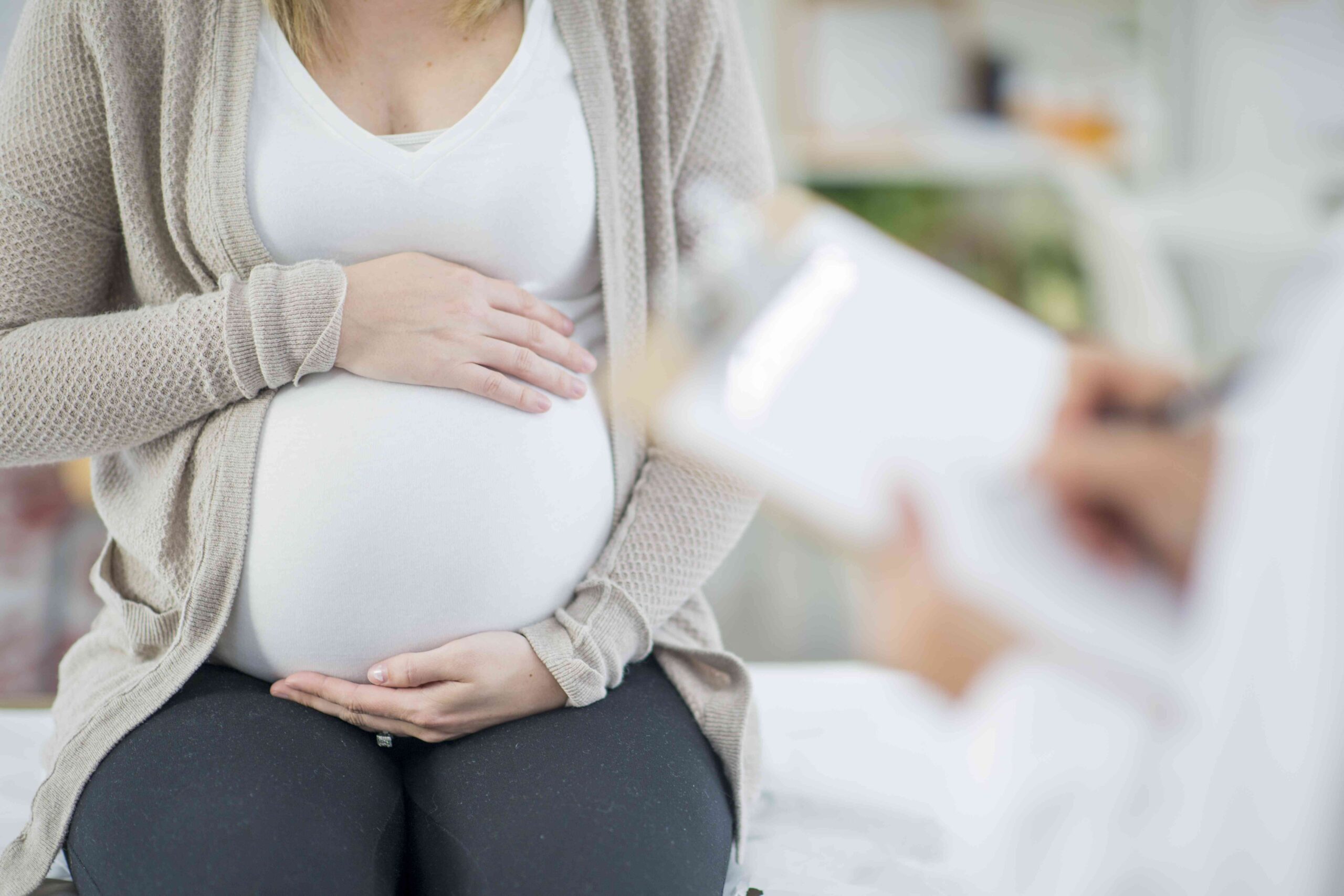
A recently approved blood test could help thousands during pregnancy by predicting preeclampsia.
Preeclampsia is a potentially deadly condition in which a person who previously did not have high blood pressure develops high blood pressure during pregnancy. According to the Centers for Disease Control and Prevention (CDC), preeclampsia impacts about 1 in every 25 pregnancies every year in the United States.
The novel biomarker test, created by Thermo Fisher Scientific, can predict with 94% accuracy whether or not a pregnant person will develop severe preeclampsia in the next two weeks. The test has been used for nearly a decade in Europe but was just recently approved for use in the United States.
The test is now slowly rolling out in U.S. hospitals.
Preeclampsia occurs on a spectrum. The test will help healthcare providers identify who is most at risk for developing severe forms of the condition, which can include seizures (a condition called eclampsia), pre-term birth, and injury or fatality of both mother and baby.
The test is not designed to be used on every pregnant person, but rather on those who have already been diagnosed with or have signs of preeclampsia.
“The purpose is to predict who will have severe preeclampsia,” said Anum Minhas, MD, an assistant professor of medicine at Johns Hopkins Medicine, who specializes in cardio-obstetrics and cardiovascular disease in women. “In that case, those women may be hospitalized early to be monitored or need to have their babies early.”
Getty Images / FatCamera
The new test combines two biomarkers that indicate placental health, placental growth factor (PlGF) and one called sFlt-1. Both tests are processed in a hospital’s diagnostics lab within about 30 minutes.
“When used together, they can produce more information that the clinician can use to make the right decision for patients,” Tina Liedtky, president of clinical diagnostics at Thermo Fisher Scientific, told Health.
Preeclampsia is a placenta disorder in which the placenta does not form properly, usually during the first half of pregnancy. As a result, the organ doesn’t get enough blood supply and releases signals that impact the mother’s blood vessels, causing high blood pressure.
Early intervention can help an expecting mother’s body keep preeclampsia from becoming severe.
According to Minhas, women who are at high risk for preeclampsia are typically advised to take daily low-dose aspirin throughout their pregnancy. The American College of Obstetrics and Gynecology (ACOG) recommends high-risk mothers start taking the medication before 16 weeks gestation and continue until delivery.
Preeclampsia is typically diagnosed after 20 weeks of pregnancy and in some cases is diagnosed after a person gives birth. However, the test is only approved for women who are between 23 and 34 weeks of pregnancy, which may leave some cases out, Minhas said.
According to Liedtky, the test is used as early as the first trimester in Europe, and the company is working to expand the test’s use during pregnancy for patients in the U.S. She stressed that although the biomarker test is a huge step forward in obstetrics medicine, it’s one tool health care providers have.
“It shouldn’t be used for diagnosis, or the only tool to be used by the clinician,” she said. “This can help them determine what they need to recommend for the mother, but they need to also look at other factors.”
Other factors to consider include how high a mother’s blood pressure is, and whether or not she has comorbidities that could also increase her risk of severe preeclampsia.
Armed with these different pieces of information, doctors can make more informed decisions about which mothers may need to stay in the hospital so they can be closely monitored, which can be discharged but potentially come in for more frequent check-ups, and which may need to prepare for early delivery, said Minhas.
“It doesn’t replace a thorough examination and laboratory and ultrasound evaluations for patients with preeclampsia,” Curtis Cook, MD, medical director of maternal fetal medicine at Dignity Health Medical Group in Chandler, Arizona told Health.
“But it might make us more efficient in determining which patients we do more testing on and which patients we require continuous hospitalizations for,” he said.
There are risk factors that put certain people at higher risk of developing preeclampsia, but the condition can also strike without warning.
If a woman had preeclampsia in one pregnancy, she’s seven times more likely to also develop the condition in future pregnancies.
Additional preeclampsia risk factors include being overweight, age 40 or older, and having multiple babies such as twins or triplets. Other existing conditions, including migraines, diabetes, rheumatoid arthritis, lupus, scleroderma, polycystic ovary syndrome, multiple sclerosis, gestational diabetes, and sickle cell disease, also increase someone’s risk of preeclampsia.
“The reality is, it can be a very deadly disease independent of how healthy you might be,” said Minhas.
A stark illustration of this reality is the recent death of Olympic runner Tori Bowie, who died last month at age 32. The gold medal winner was 8 months pregnant when she and her unborn baby were both found dead in her home in Florida. An autopsy revealed her death was caused by respiratory distress and a seizure related to preeclampsia.
Race also plays a role in preeclampsia risk.
As part of the FDA approval process, Thermo Fisher’s biomarkers were studied in more than 1,000 pregnant people in 18 hospitals throughout the U.S. Importantly, 31% of the study’s participants were Black women.
Black women like Bowie are 60% more likely to develop preeclampsia compared to other races.
The disparity is one of many that have contributed to enormously high rates of maternal mortality in the U.S., specifically among Black mothers. CDC data shows that in 2021, Black mothers were 2.6 times as likely to die in pregnancy compared to White mothers.
Novel tests may not be equitably accessed if they’re used in the first trimester, when low-income and high-risk women are less likely to be able to access prenatal care, said Cook.
For new diagnostic tools to be equitably utilized, the U.S. healthcare system will first need to address systemic issues that prevent people of color from getting equal care.
“This disease doesn’t discriminate based on race but our health system sometimes does,” said Liedtky. “These tests allow for an objective measure of what is going on in a woman’s body and that can make a difference in saving the child and the mother’s life or not.”





